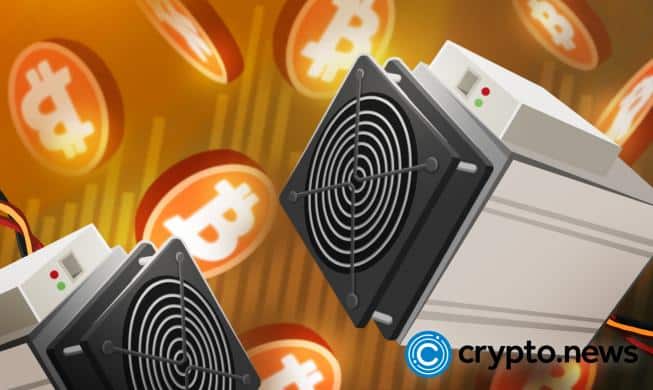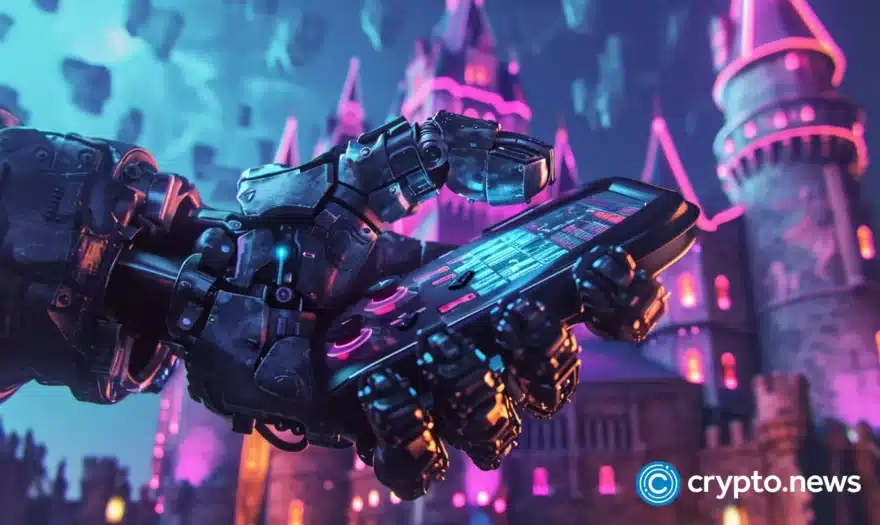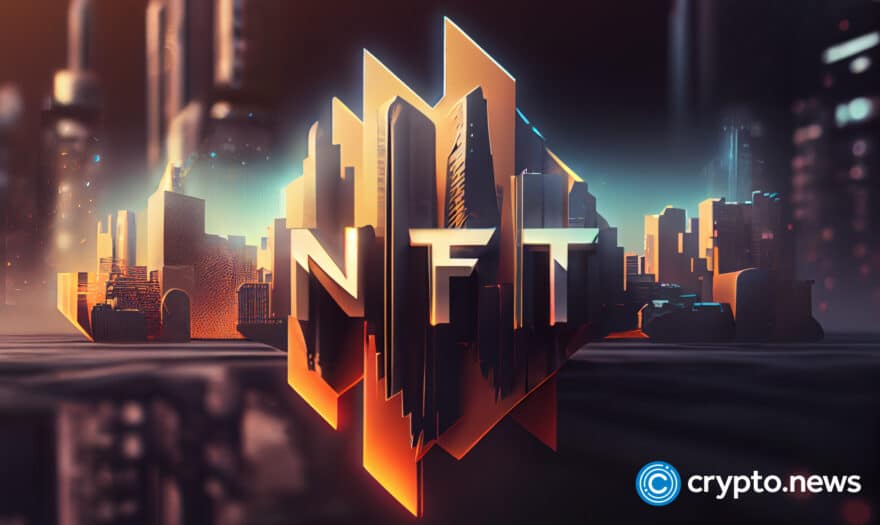How to Set up a Bitcoin Miner

Bitcoin mining is the process of solving complex cryptographic problems to verify transactions and add new blocks to the Bitcoin blockchain. Bitcoin miners leverage extensive computing power to compete against each other in an attempt to verify transactions and add the next block to the blockchain. Miners who win are rewarded with a small amount of bitcoin for successfully solving complex cryptographic equations within the shortest period.
Bitcoin Mining Explained
Before setting up a Bitcoin miner, it’s important to understand how Bitcoin mining works. Bitcoin mining is achieved by running SHA256 double round hash verification processes to validate Bitcoin transactions and offer the needed security for the Bitcoin’s network public ledger.
The Bitcoin network compensates Bitcoin miners for their efforts in validating transactions on the network by offering rewards. The rewards are offered in the form of newly issued bitcoins and as a percentage of the transaction fees included in the transactions validated when mining bitcoins. In a mining pool, the rewards are shared based on the share of the computing power provided.
The current reward for successfully validating a block of Bitcoin transactions is 6.25 bitcoin. However, this amount is expected to decrease to 3.125 BTC in 2024 as per the Bitcoin halving process which occurs after every four years.
Bitcoin miners can either mine alone using powerful computers or pull their computing powers into pools to be more competitive. Remember, Bitcoin mining is all about competition, and the higher the computational power, the higher the probability of validating the transactions and getting rewarded. While Bitcoin mining is currently dominated by established mining cooperation with specialized Bitcoin mining equipment, it’s still possible for individuals to successfully mine Bitcoin either by joining a mining pool or mining solo.
When looking to set up a Bitcoin miner, there are two essential factors you’ll to consider:
- Hashrate– Hashrate is the speed at which computer hardware can perform computations per second. Hash Rates are quoted in megahashes (MH/s), gigahashes (GH/sec), terahashes (TH/sec), and exahashes per second (EH/sec). The higher a computer hardware’s hashrate Vis a Vis the target hash, the more likely you can solve a transaction block on the Bitcoin blockchain.
- Energy Consumption-When choosing your mining hardware, another vital factor you ought to consider is the device’s energy consumption. Bitcoin mining rigs consume a colossal amount of electricity which can be costly. Therefore, it’s important to ensure that you don’t go for mining rigs that consume crazy amounts of electricity, costing more than the coins it can mine.
Steps to Mine Bitcoin
While Bitcoin mining has undergone immense growth in recent years such that mining operations are being conducted in an entire warehouse with powerful, custom-made mining devices, it’s still possible to mine Bitcoin all by yourself. Below are the steps for mining Bitcoin solo.
- Pick and Set Up Your Bitcoin Mining Hardware
The first step in mining Bitcoin solo is choosing computer hardware with the right hashrate required to mine Bitcoin. To calculate the number of hashes you’ll be getting for every watt of electricity, simply divide the hash rate by the number of watts indicated in the technical specifications of the hardware.
For instance, if you are considering a 500GH/sec mining hardware taking 1000 watts of power, you’ll be getting 1.25 GH/sec per watt. You can then calculate the electricity costs by using an electricity price calculator online customized to your geographical location.
There are three types of hardware that can be used to mine Bitcoin as outlined below:
- CPU/GPU Hardware– While a computer’s CPU can technically be used to mine bitcoin, this is not the case today owing to the immense competition among miners. You can enhance a computer’s processing power by integrating graphics hardware into the computer. Graphics cards feature graphical processing units (GPUs) which are suitable for the Secure Hash Algorithm i.e. SHA-256 which is the hashing mathematics needed to solve transactions on the Bitcoin blockchain. Owing to the immense growth of the Bitcoin network and the consequent increase in the number of miners, CPU and GPU Bitcoin mining is no longer profitable these days.
- FPGA– Field Programmable Gate Array (FPGA) are integrated circuits that can be configured for crypto mining after their manufacture. When customized for Bitcoin mining, FPGAs offer improved performance over GPUs and CPUs with single-chip FPGAs providing hashrates of up to 750MH/sec. While they are a significant improvement over GPUs and CPUs, FPGAs aren’t quite viable for Bitcoin mining today owing to their low performance.
- ASIC Chips– Application-Specific Integrated Circuits (ASICs) are integrated circuits designed specifically to mine Bitcoin. They are very efficient in mining bitcoin with their hash rates ranging anywhere from 7-14 Terahash/second (1 Terahash = 1 trillion hashes.) Considering that they are designed specifically to mine bitcoin, ASIC chips can be pretty expensive and time-consuming to produce. Nonetheless, their returns are pretty high thanks to high mining speeds with minimal electricity consumption.
- Get a Dedicated Bitcoin Wallet
After obtaining a Bitcoin mining hardware of your choice, the next step is to create a Bitcoin wallet which you’ll use to receive the mining rewards in the form of bitcoin. There are a variety of Bitcoin wallets you can create based on your personal preferences and security. A hardware wallet is usually recommended for any Bitcoin miner thanks to a high level of security, low charges, and convenience.
- Set up the Mining Equipment
Now that you’ve set up a Bitcoin wallet and have the mining hardware in place, the next step is to install and configure Bitcoin mining software. Installing and launching the mining software may require a bit of technical knowledge depending on the type of software or whether you’re linking multiple Bitcoin mining hardware to enhance your bitcoin mining capacity. Some BTC mining software requires the common command line language via a graphical user interface (GUI) while others require advanced programming knowledge. Depending on your technical ability, go a Bitcoin mining software you’ll be comfortable installing and operating.
- Start Mining Operation
After you’re done with the above steps, you can start mining almost immediately. Download the local copy of the Bitcoin blockchain to your computer and start mining. Your mining rig can run 24/7 as long as it’s connected to stable and reliable power. You also need to check the mining hardware periodically to ensure it’s still mining as required.
Setting Up a Customized Bitcoin Mining Rig
A mining rig is essentially a customized PC with enhanced performance best suited for crypto mining. You can set up a customized Bitcoin mining rig at home and start mining. However, it’s a cheap venture considering that you’re not building a regular PC. Besides, you’ll also need to factor power consumption into your profitability equation. Below are the components you need to set up a functional Bitcoin mining rig that can use to mine bitcoin solo.
Motherboard
The motherboard acts as the backbone or “spinal cord” of the computer, linking all components together. For a Bitcoin mining rig, the Asus B250 Mining Expert is highly recommended as it can handle up to 19 graphics cards. You can also go for the Monland B250C BTC Mining Motherboard which is considered a cheaper option and not so less powerful.
CPU
There is no need for spending big on the CPU, considering that the GPU will be doing all the mining work. You can go with the Intel Core i5-6500 which is also compatible with the Asus B250 Mining Expert motherboard.
RAM
The RAM shouldn’t cost you much considering that it also doesn’t handle much of the mining work. The DDR4 2400 and the 2x8GB kit are recommended considering that they are compatible with the above-mentioned motherboard.
Storage
For storage, SSDs are recommended over HDDs owing to their efficiency. You can install a couple of SanDisk SSD Plus 1TB as per your storage needs.
PSU
The Power Supply Unit (PSU) should be of high quality to avoid damaging the other components. There are plenty of cheap, fake PSUs in the market today, therefore you should be keen when buying-spend a little more if need be. Depending on the number of graphics cards you’ll install on the motherboard, you might need additional PSUs. The Segotep 850W Full-Modular PSU is highly recommended.
PCI-e Riser
PCI-e risers are not usually found on regular PCs but are needed in a Bitcoin mining rig. These risers allow you to connect GPUs to the motherboard indirectly, allowing for better flexibility and sufficient airflow to keep the GPUs at optimum temperature. You’re going to need one of the PCI-e risers for every card you connect to the motherboard (other than the card that goes into the x16 PCI-e slot). The FebSmart 16x to 1x Powered Riser 6-pack is highly recommended for Bitcoin mining rigs.
Nvidia Graphics Card
The graphics card is at the heart of a mining rig’s performance. Nvidia graphics cards, specifically the MSI Ventus 3X GeForce RTX 3090 is often preferred thanks to its immense potential for overclocking, great stability, and good cooling. It also has a lower power consumption reducing mining operation costs.
Closing Words
Mining Bitcoin solo is still pretty lucrative to mine despite the increase in the number of miners, mining difficulty, and operation costs of running a Bitcoin miner. To mine Bitcoin solo, you should be ready to invest in a mining rig and be ready to pay for the operating costs which include the cost of electricity and internet. The cost of mining Bitcoin varies per location and it’s possible to make a profit or loss when mining Bitcoin.
Therefore, before you invest in a Bitcoin mining rig, you can calculate the projected mining profitability, using Bitcoin mining profitability calculators such as Nicehash. These calculators take into account parameters such as hashrate, equipment cost, and power consumption as well as the current bitcoin price to determine whether you’ll get significant ROI or you’ll go at a loss. If you don’t have the capital to set up a Bitcoin miner, remember there are alternatives to solo Bitcoin mining such as cloud mining or investing in a Bitcoin mining company.
FAQs
How long does mining one bitcoin take?
The average time it takes to mine 1 BTC depends on a number of variables, making estimation difficult. Notably, processing capacity, rivalry, and the type of hardware being used are important determinants. The mining difficulty level is influenced by the hashing algorithm used. It’s designed to auto-determine a block verification time of 10 minutes. The majority of mining locations and conditions, however, are far from perfect.
What is the setup cost for Bitcoin mining?
The price of an ASIC setup that can independently solve Bitcoin calculations is around $12,000.
However, most people combine their resources and enter the industry for far less. Prices for brand-new ASIC miners range from $489 to $3,000.
Equipment and electricity expenses, mining difficulty, and the price of bitcoin all have an impact on how profitable bitcoin mining is.
Is bitcoin mining difficult?
Bitcoin mining is becoming more tough than ever. The difficulty of mining Bitcoin has increased by almost 5.56 percent during the past two weeks, reaching a record high of 30 trillion (Bitcoin mining difficulty is measured on a scale of 1 to infinity).
The Bitcoin network features an automatic system that changes the mining difficulty based on how many validators are participating in the mining process in order to maintain a consistent flow of blocks being added to the blockchain. This mechanism makes sure that adding and verifying a single new block of transactions takes about 10 minutes.
How much electricity is used during Bitcoin mining?
The largest cryptocurrency in the world, Bitcoin, is presently predicted to require 150 terawatt-hours of electricity yearly, which is more than the whole 45 million-person nation of Argentina. With its annual emissions of 65 megatons of carbon dioxide, or about the same amount as Greece, the production of that energy makes cryptocurrency a substantial contributor to both global air pollution and climate change.














